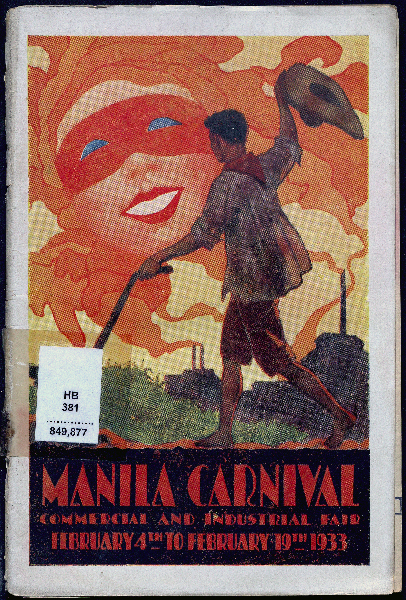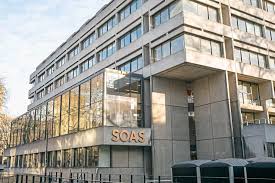SOAS University of London launches ‘Digital Filipinana’ collection

Vintage visual materials are among the Filipiniana collection accessible online from SOAS University of London.
LONDON – SOAS University of London (the School of Oriental and African Studies) has created “Digital Filipiniana”, an open-access collection of digitized Philippine texts and materials.
Dr. Cristina Martinez-Juan, senior teaching fellow and researcher in the South East Asia Section of the School of Languages, Cultures and Linguistics, initiated the project, which was resulted from an effort to advance Philippine studies in the UK.
Making PH materials more accessible
To advance Philippine studies within the UK, the Centre of Southeast Asian Studies at SOAS first wanted to develop the assets they already had.
Article continues after this advertisementOne such asset was their sizeable existing collection of materials on the Philippines.
Article continues after this advertisementTo identify relevant materials, Dr. Martinez-Juan worked with her colleagues Dr. Jotika Khur-Yearn, the Subject Librarian for South East Asia and Pacific Islands, and William Gervase Clarence-Smith, Professor of the Economic History of Asia and Africa.
“When we received a grant from the DFA and the office of Senator Loren Legarda, we began thinking of ways to let more people know about the Philippine materials at SOAS,” said Martinez-Juan.
“The SOAS library, being the national collecting institution for the Philippines in the UK, already has a vigorous system in place for acquiring new titles. We looked at the SOAS Archives and Special Collections to identify eligible materials, and then worked with the digital team in creating a standalone, one-click access to a Digital Filipiniana.”
Filipiniana repositories
The term “Filipiniana,” based on the 1992 definition created by historian Dr. Isagani R. Medina, refers to Philippine-related books and non-book materials (including fashion, games, figurines and others).
Current texts available on Digital Filipiniana date back to the 16th century.
There are two repositories of Philippine materials at SOAS – one is in the South East Asian Collection at SOAS Library, and another is the archival materials in the SOAS Archives and Special Collections.
The SOAS Library currently has over 7,000 general Philippine materials, and continues to collect more.
“We have over 90 percent of the books published by UP Press, for example,” says Martinez-Juan. “And by sourcing what we come across as interesting new publications in the Social Sciences and the Humanities to our Subject Librarian, Dr. Khur-Yearn, we get a majority of the latest publications on the Philippines rather quickly.”
“We are trying to build a significant resource for research on the Philippines in Europe. The general public can get access to the SOAS library either by getting the SOAS Library pass (free for 3 days and an annual fee thereafter) or through E-book Central (again with the annual library pass). If you are SOAS alumni, you can get an annual Alumni card which gives you access to the Library for a tenner.”
From physical to digital
The project team worked closely with the Digital Assets team, led by Erich Kesse, Digital Library Project Officer at SOAS, to make the texts digital.
The scanner used by the digital team is the Copybook Cobalt HD, a highly specialized bookscanner dedicated to digitization projects with technically sensitive features for fragile materials.
Kesse broke down the digitization process, starting with curation. The materials are typically selected by Martinez-Juan or Khur-Yearn.
Catalogues are then collected and brought into the digital systems; records and item text form the basis of all searches, and each resource is assigned a unique item ID. After this, the catalogue records are augmented and descriptions added.
The materials are then assessed to see whether they are good enough condition to be scanned.
Built-in book cradle
“The Copybook scanner has a built-in book cradle, gentle enough for most bound volumes, but some [materials] are too tight, fragile, or brittle. We want to have an idea of the potential damage that will be done by digitization,” said Kesse.
He added: “This is especially important for the rarest of volumes selected. We will not digitize if damage exceeds a curator’s threshold.”
The volumes are then digitized. A diligent process, says Kesse, where he or his assistant Cat Buxton “will literally turn pages, one by one, until complete.” Their images range between 400 and 600 dots per inch (dpi) and are saved as uncompressed TIFF files for highest image quality.
These scanned images then go through processing and corrections in Photoshop, with two-page images separated using software called ScanTailor. Kesse notes that, for rarer books or items with binding issues, they may also keep a double page version.
Once the images are processed, a PDF is generated for each title, with derivatives for web viewing. Automation is made to create JPEG images and thumbnails, plus a JPEG2000 zoomable image.
The images then undergo optical character recognition (OCR) to generate searchable text. As most Digital Filipiniana texts are in Latin or Roman characters, this process is typically straightforward. However, rarer books with poor contrast render poorer results. More modern texts render higher accuracy.
Finally, all the files are loaded into SOAS Digital Collections (digital.soas.ac.uk), the digital library technology, which puts all of the parts together and makes them searchable. This also creates the official archive – copies set aside in the event of a disaster.
At this final stage, Kesse says “we will perform quality control, checking for missing pages and bad images. We also add page numbers and build a table of contents.”
Copyright permissions
The materials that are currently up as Digital Filipiniana are all taken from the SOAS Archives and Special Collections. These archival materials are either beyond copyright law (over 100 years old), or have been bequeathed to SOAS and do not hold any copyright restrictions.
Dr. Ifor Ball Powell (1902-1986) was a British historian and Philippine specialist. His Collection on the Philippines, full of reference material dated 1926-86, is one such example of these materials.
The Collection holds extensive private correspondence between Dr. Powell and imminent academics and politicians in the Philippines from the period, including Professor Otley Beyer, and former President of the UN General Assembly and Minister of Foreign Affairs, Carlos P. Romulo.
In addition to Powell’s personal collection of Philippines photos dated in the 1920s, rare photographs of the Kingdom of Sulu in Southern Philippines, dating to the late 19th century, were incorporated into the Collection when the papers and photos of Thomas Henry (T. H.) Haynes (1883-1934) were donated to Powell by Haynes’s wife.
Feedback
“We published Digital Filipiniana as a stand-alone section within the SOAS Digital Collections last week, so we don’t have any stats just yet. But the response and suggestions for further materials to digitize has been tremendous,” said Dr. Martinez-Juan, regarding feedback on Digital Filipinana thus far.
“We are trying to get digital rights to the General Archive of the Indies (AGI) in Seville to add to the collection, or perhaps work with other institutions, like the British Library, to scan materials.”
She added: “In the long term, we hope to make all copyright-free materials in the SOAS Archives to be available through Digital Filipiniana, and eventually position SOAS to be the go-to place for research on the Philippines in the UK.-@melissalegarda
